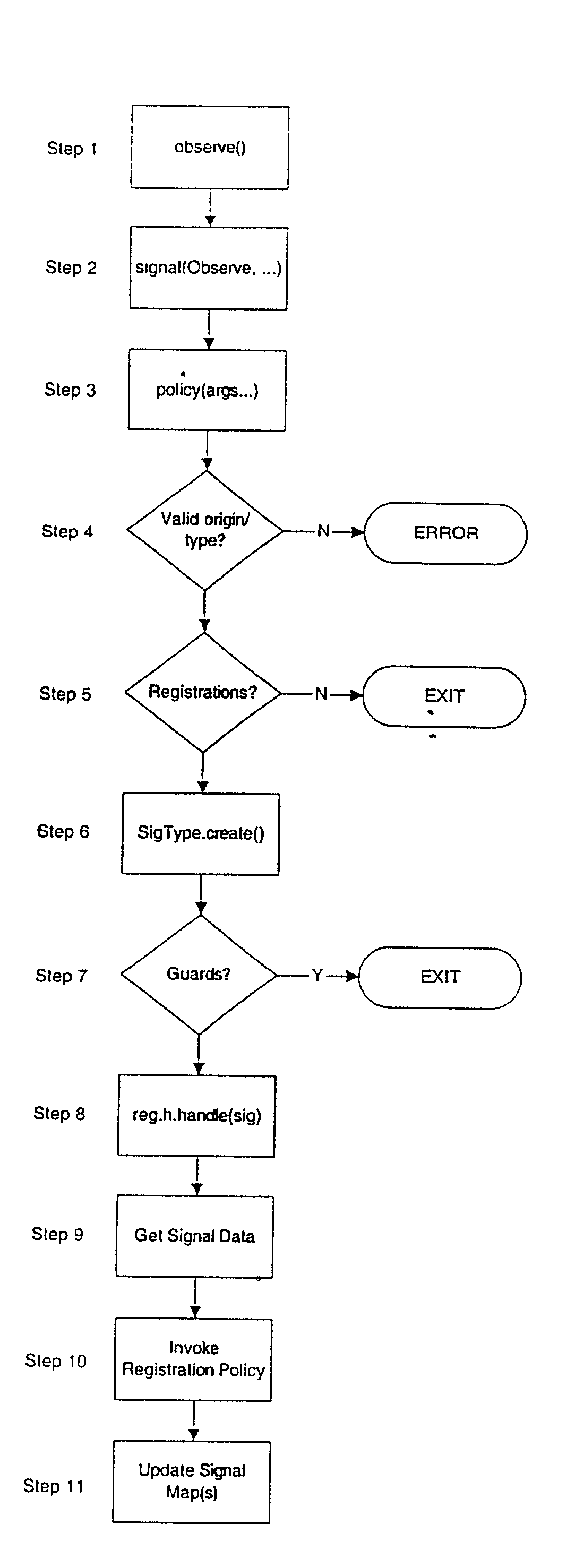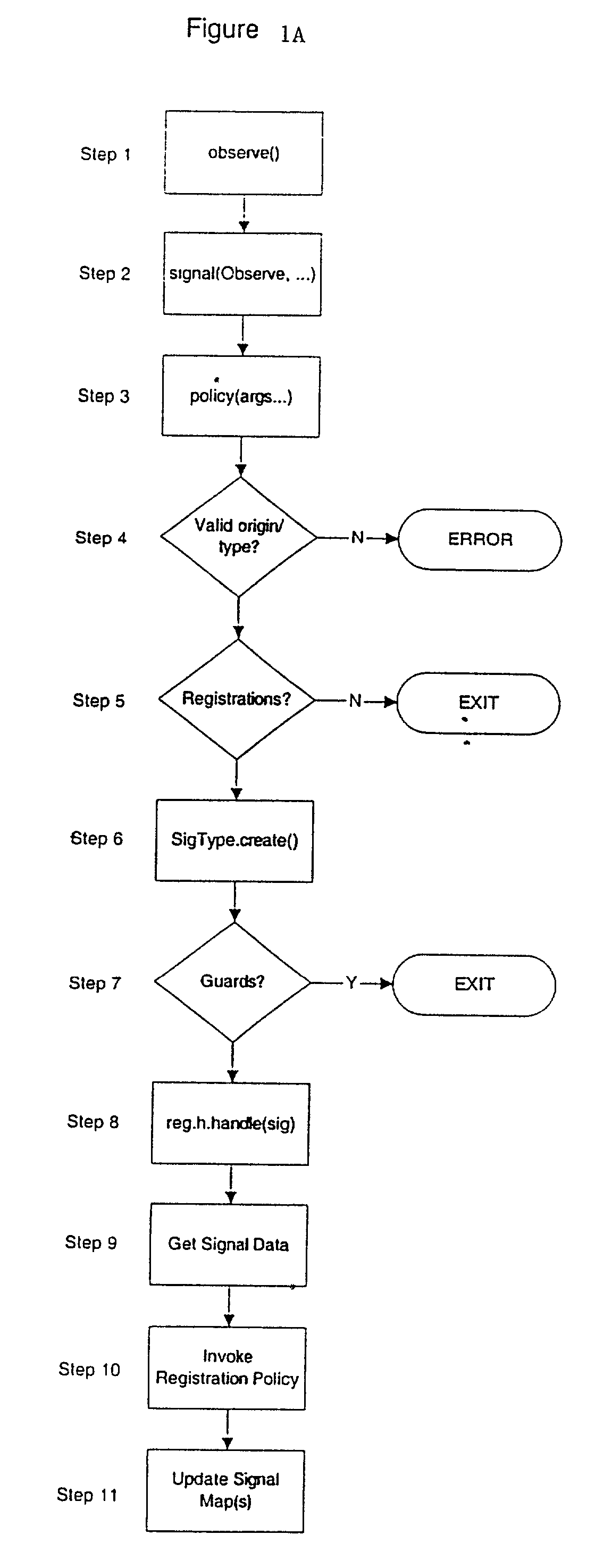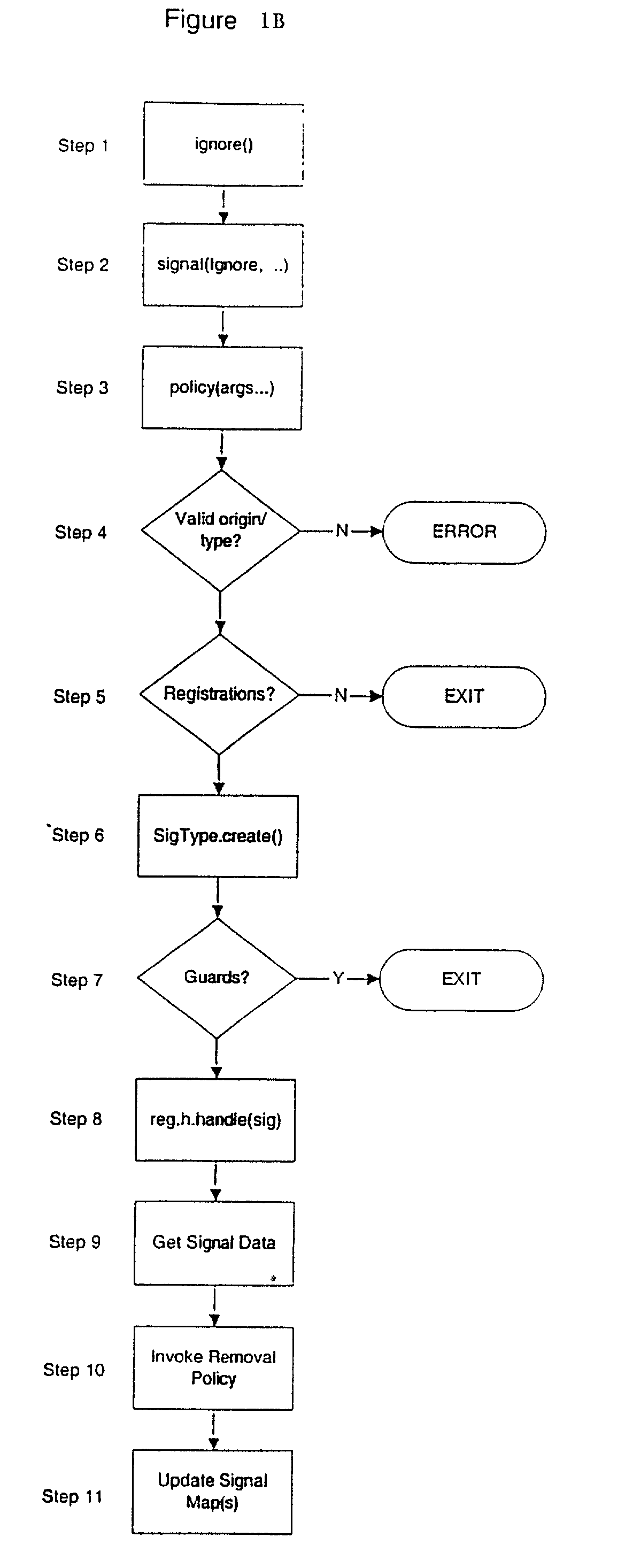System supporting unified event handling in ECMAScript
a technology of event notification and system, applied in the field of system supporting unified event notification in ecmascript, can solve the problems of event propagation, situation will get worse--not better, and it is difficult to predict when a unified model for event notification will be deployed market-wid
- Summary
- Abstract
- Description
- Claims
- Application Information
AI Technical Summary
Benefits of technology
Problems solved by technology
Method used
Image
Examples
Embodiment Construction
[0102] The core data structure for the notification aspects of the invention is known as the "signal map". The signal map stores data extracted from individual "event registration" objects or "registrations" which define one or more signal origin / signal type pairs as well as the function or "handler" to invoke should registration criteria be met. An optional "guard" may also be stored to control access to the handler.
[0103] The signal map is composed of nested data structures which support the ability to access registration data by signal origin, by signal type, and by any combination thereof. Within each map location specified by a signal origin / signal type pair the registration storage is segmented by whether the registration is a capturing or non-capturing (potentially bubbling) event registration. This segmentation provides faster response for dealing with DOM style event propagation. Construction of the initial signal map data structures is performed as follows:
2 / / create the ...
PUM
 Login to View More
Login to View More Abstract
Description
Claims
Application Information
 Login to View More
Login to View More - R&D
- Intellectual Property
- Life Sciences
- Materials
- Tech Scout
- Unparalleled Data Quality
- Higher Quality Content
- 60% Fewer Hallucinations
Browse by: Latest US Patents, China's latest patents, Technical Efficacy Thesaurus, Application Domain, Technology Topic, Popular Technical Reports.
© 2025 PatSnap. All rights reserved.Legal|Privacy policy|Modern Slavery Act Transparency Statement|Sitemap|About US| Contact US: help@patsnap.com



